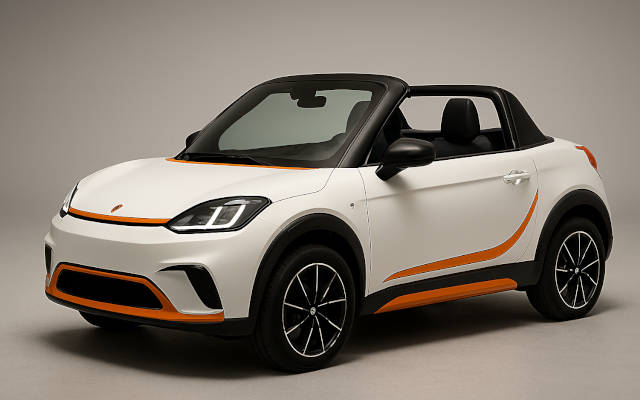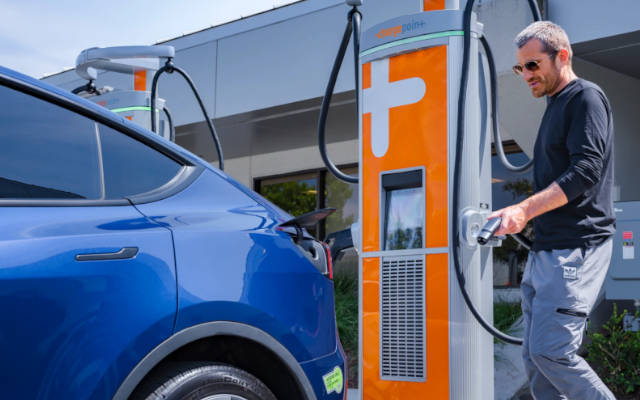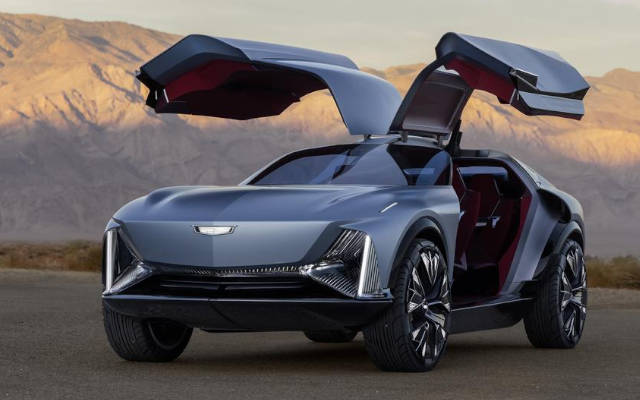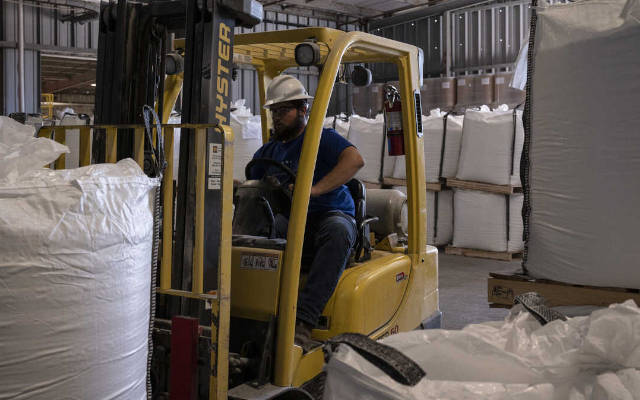 EDITOR'S PICK
EDITOR'S PICK
The Italian Job : EV Startup Promised Big and Delivered Little
17 Aug 2025 | Synopsis
 Italian EV maker Tazzari quietly continues building ultra-light city cars, while its U.S. partner Imola Automotive USA promised six factories and 45,000 jobs - but delivered none. Despite flashy renderings and bold claims, Imola has stalled, leaving towns waiting. Tazzari, though small, remains credible. The tale contrasts real innovation with speculative hype in the evolving EV landscape.
Italian EV maker Tazzari quietly continues building ultra-light city cars, while its U.S. partner Imola Automotive USA promised six factories and 45,000 jobs - but delivered none. Despite flashy renderings and bold claims, Imola has stalled, leaving towns waiting. Tazzari, though small, remains credible. The tale contrasts real innovation with speculative hype in the evolving EV landscape.EV Fast Chargers Have A Surprising Health Downside
16 Aug 2025 | Synopsis
 A new study finds EV fast-charging stations may emit fine particulate matter due to cooling fans stirring up dust, tire, and brake particles. Measurements at 50 sites in LA showed levels exceeding WHO guidelines at nearly half the locations. Researchers urge filtration systems and strategic placement to reduce health risks. Despite this, EVs remain cleaner than gas vehicles.
A new study finds EV fast-charging stations may emit fine particulate matter due to cooling fans stirring up dust, tire, and brake particles. Measurements at 50 sites in LA showed levels exceeding WHO guidelines at nearly half the locations. Researchers urge filtration systems and strategic placement to reduce health risks. Despite this, EVs remain cleaner than gas vehicles.When It Comes to Self-Driving Tech, Tesla Musked Themselves
15 Aug 2025 | Synopsis
 Autonomous vehicles face regulatory gridlock after Elon Musk's DOGE initiative slashed staff at the Office of Automation Safety. The cuts removed those who could streamline legal hurdles, leaving companies stuck without guidance or exemptions. With outdated laws and few regulators left, AV progress has stalled. A Senate report now urges rehiring to restore oversight and support for safe deployment.
Autonomous vehicles face regulatory gridlock after Elon Musk's DOGE initiative slashed staff at the Office of Automation Safety. The cuts removed those who could streamline legal hurdles, leaving companies stuck without guidance or exemptions. With outdated laws and few regulators left, AV progress has stalled. A Senate report now urges rehiring to restore oversight and support for safe deployment.Cadillac Aims for New Heights With Elevated Velocity Concept
15 Aug 2025 | Synopsis
 Cadillac's Elevated Velocity Concept is a futuristic, all-electric 2+2 crossover blending luxury, off-road capability, and autonomous tech. Inspired by events like the Dakar Rally, it features gullwing doors, multi-motor V-Series performance, and wellness-focused cabin tech like infrared therapy and biometric sensors. Though not slated for production, it signals Cadillac's bold design and performance direction.
Cadillac's Elevated Velocity Concept is a futuristic, all-electric 2+2 crossover blending luxury, off-road capability, and autonomous tech. Inspired by events like the Dakar Rally, it features gullwing doors, multi-motor V-Series performance, and wellness-focused cabin tech like infrared therapy and biometric sensors. Though not slated for production, it signals Cadillac's bold design and performance direction.Dead EV Batteries Are Hoarding a Shocking Amount of Useful Lithium
15 Aug 2025 | Synopsis
 Dead EV batteries retain nearly 80% of their lithium capacity but most end up in landfills. Australian researchers show recycling could recover 99% pure lithium plus nickel and cobalt while producing 61% less carbon than mining. Recycling uses 83% less energy and 79% less water than extraction. With 13% annual battery market growth, waste could hit 137,000 tons yearly in Australia alone. Untapped goldmine of materials sitting idle.
Dead EV batteries retain nearly 80% of their lithium capacity but most end up in landfills. Australian researchers show recycling could recover 99% pure lithium plus nickel and cobalt while producing 61% less carbon than mining. Recycling uses 83% less energy and 79% less water than extraction. With 13% annual battery market growth, waste could hit 137,000 tons yearly in Australia alone. Untapped goldmine of materials sitting idle.
 Si Exclusive
Si Exclusive
Hydrogen's Flight Path: Fuel Cells, Turbines, and the Economics of Clean Aviation
10 Oct 2025 |  Aviation is shifting from Jet A to four fuel systems: electricity, hydrogen (fuel cell and combustion), SAF, and petroleum. Fuel cells suit short-haul aircraft; hydrogen combustion may power long-range jets. SAF bridges legacy fleets. Hydrogen costs - $5-$7/kg today, possibly $2/kg by 2040 - impact ticket prices and infrastructure decisions. Airport authorities, airlines, and governments will share deployment costs. Each fuel has distinct environmental pros and cons shaping aviation's net-zero future.
Aviation is shifting from Jet A to four fuel systems: electricity, hydrogen (fuel cell and combustion), SAF, and petroleum. Fuel cells suit short-haul aircraft; hydrogen combustion may power long-range jets. SAF bridges legacy fleets. Hydrogen costs - $5-$7/kg today, possibly $2/kg by 2040 - impact ticket prices and infrastructure decisions. Airport authorities, airlines, and governments will share deployment costs. Each fuel has distinct environmental pros and cons shaping aviation's net-zero future.
Ferrari Elettrica: Electrified, Not Tamed
09 Oct 2025 |  Ferrari's Elettrica EV delivers over 1,000 hp via quad motors, hitting 0-100 km/h in 2.5s with a 330+ mile range. Its 122 kWh battery sits low for balance, paired with active suspension and rear steering. Designed by LoveFrom, the four-door GT aims to preserve Ferrari's emotional DNA. Priced around $580K, it launches in 2026 in Europe and the U.S., with hybrids and ICE models still dominating until 2030
Ferrari's Elettrica EV delivers over 1,000 hp via quad motors, hitting 0-100 km/h in 2.5s with a 330+ mile range. Its 122 kWh battery sits low for balance, paired with active suspension and rear steering. Designed by LoveFrom, the four-door GT aims to preserve Ferrari's emotional DNA. Priced around $580K, it launches in 2026 in Europe and the U.S., with hybrids and ICE models still dominating until 2030
Are Self-Driving Cars Safer Than Humans? The Data May Surprise You
09 Oct 2025 |  Studies show autonomous vehicles (AVs) are generally safer than human drivers, avoiding most rear-end and broadside crashes and performing better in poor weather. However, AVs struggle with complex maneuvers like unprotected turns and low-light conditions. If AVs are just 10% safer, they could prevent 600,000 U.S. deaths over 35 years. As EVs become autonomy platforms, safety depends on how well they interpret real-world scenarios
Studies show autonomous vehicles (AVs) are generally safer than human drivers, avoiding most rear-end and broadside crashes and performing better in poor weather. However, AVs struggle with complex maneuvers like unprotected turns and low-light conditions. If AVs are just 10% safer, they could prevent 600,000 U.S. deaths over 35 years. As EVs become autonomy platforms, safety depends on how well they interpret real-world scenarios
 11 Oct 2025 16:29:49 UTC |
RECENT PODCASTS
BYD Soars - Cheaper Tesla Models - The Bolt is Back - Rivian
SEARCH RSSTREAM
 43 New Postings In Past 24 Hours
43 New Postings In Past 24 Hours
Category:mobility
Region:NoAmerica
Date:11 Oct 2025
Category:autonomy
Region:NoAmerica
Date:11 Oct 2025
Category:finance
Region:NoAmerica
Date:11 Oct 2025
Category:finance
Region:NoAmerica
Date:11 Oct 2025
Category:mobility
Region:NoAmerica
Date:11 Oct 2025
Category:mobility
Region:AsiaPacific
Date:11 Oct 2025
Category:mobility
Region:AsiaPacific
Date:11 Oct 2025
Category:mobility
Region:Europe
Date:11 Oct 2025
Category:mobility
Region:NoAmerica
Date:11 Oct 2025
Category:finance
Region:NoAmerica
Date:11 Oct 2025
Category:mobility
Region:NoAmerica
Date:11 Oct 2025
Category:autonomy
Region:NoAmerica
Date:11 Oct 2025
Category:mobility
Region:NoAmerica
Date:11 Oct 2025
Category:mobility
Region:Europe
Date:11 Oct 2025
Category:finance
Region:NoAmerica
Date:11 Oct 2025